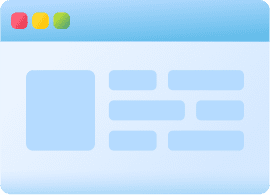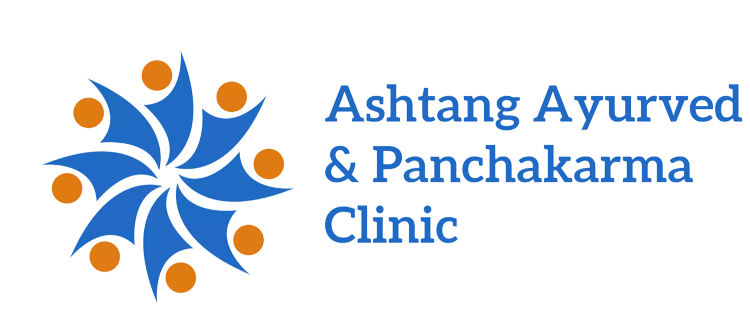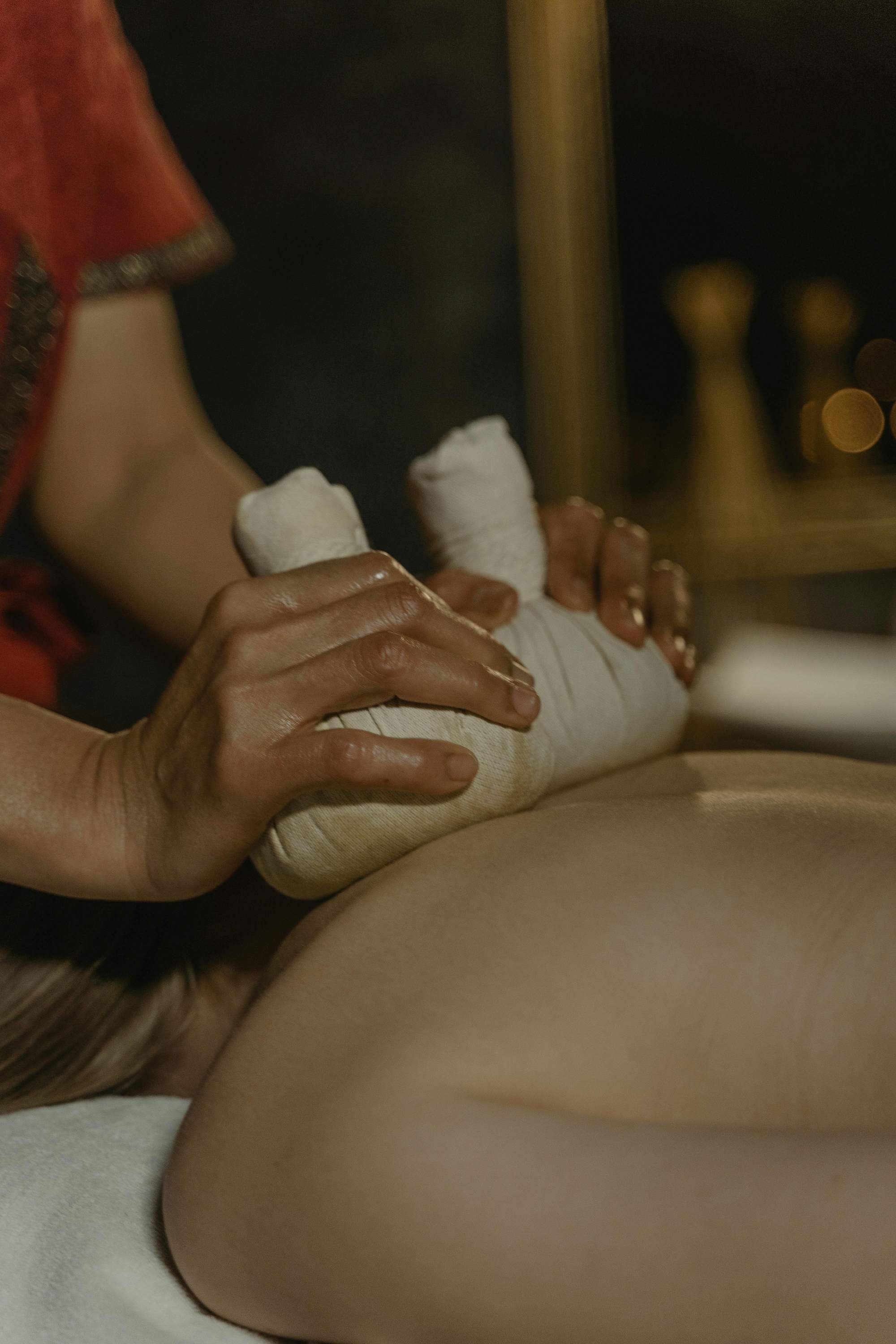Netra Tarpana, is a therapeutic procedure in Ayurveda that involves the administration of medicated ghee around the eyes. This treatment is specifically designed to nourish and rejuvenate the eyes and surrounding tissues. Netra Tarpana is part of Ayurvedic eye care and is often recommended for various eye disorders, to promote eye health, and as a preventive measure. Benefits: Nourishes and rejuvenates the eyes. Relieves eye strain and fatigue. Improves vision and clarity. Supports the management of various eye disorders.

This is your website preview.
Currently it only shows your basic business info. Start adding relevant business details such as description, images and products or services to gain your customers attention by using Boost 360 android app / iOS App / web portal.
Treatments
We focus on continuous quality improvement to provide patients a safe environment to recieve highest quality care
Treatments
Vamana and Virechana are two classical detoxification procedures in Ayurveda, both falling under the broader category of Panchakarma therapies. These therapies aim to remove accumulated toxins (ama) from the body and restore balance to the doshas. Here's an overview of each: Virechana Karma (Purgation Therapy): Purpose: Virechana is mainly indicated for individuals with an excess of Pitta dosha. It is beneficial for conditions such as liver disorders, skin diseases, chronic fever, and digestive issues associated with Pitta imbalance. Procedure: 1. Preparation (Purvakarma): Similar to Vamana, this involves preparatory measures, including internal oleation and sudation. 2. Snehapana (Internal Oleation): Medicated ghee or oil is given internally to lubricate the digestive tract. 3. Swedana (Sudation): External and internal sudation is induced to liquefy the toxins and move them towards the gastrointestinal tract. 4. Virechana: The individual is then given a purgative substance (usually a herbal decoction) to induce controlled bowel movements and eliminate excess Pitta. 5. Post-Virechana Diet: After Virechana, a specific diet is followed to allow the body to recover, and digestive strength is gradually restored. Benefits: Elimination of excess Pitta dosha. Improved liver function. Relief from skin disorders and digestive issues associated with Pitta imbalance. Considerations: Both Vamana and Virechana should be performed under the guidance of a qualified Ayurvedic practitioner. The choice between Vamana and Virechana depends on the individual's constitution, the doshic imbalance, and the specific health condition.
Vamana and Virechana are two classical detoxification procedures in Ayurveda, both falling under the broader category of Panchakarma therapies. These therapies aim to remove accumulated toxins (ama) from the body and restore balance to the doshas. Here's an overview of each: 1. Vamana Karma (Emesis Therapy): Purpose: Vamana is primarily indicated for individuals with an excess of Kapha dosha. It is particularly effective in conditions of chronic respiratory disorders, allergies, asthma, and certain skin disorders where Kapha is implicated. Procedure: 1. Preparation (Purvakarma): This involves preparing the individual through a specific diet and internal oleation to move excess doshas to the gastrointestinal tract. 2. Snehapana (Internal Oleation): The individual is given medicated ghee or oil internally for a few days to lubricate the tissues and loosen toxins. 3. Swedana (Sudation): External and internal sudation is induced to liquefy the toxins and move them towards the gastrointestinal tract. 4. Vamana: The individual is then given an emetic substance (usually a herbal decoction) to induce controlled vomiting. 5. Post-Vamana Diet: After Vamana, a specific diet is followed to allow the body to recover, and digestive strength is gradually restored. Benefits: Elimination of excess Kapha dosha. Improved respiratory function. Reduction in allergies and skin disorders associated with Kapha imbalance.
INR 700
Nasya is a therapeutic Ayurvedic procedure that involves the administration of medicinal substances through the nasal passages. It is a part of the Panchakarma, a comprehensive detoxification and rejuvenation therapy in Ayurveda. Nasya treatment is known for its ability to address various health issues, particularly those related to the head and neck region. Here is an overview of Nasya treatment, its benefits, and the process involved: Benefits of Nasya Treatment: 1. Sinus Congestion and Allergies: Nasya is often used to alleviate sinus congestion and address allergic conditions by clearing excess mucus and reducing inflammation in the nasal passages. 2. Headache and Migraines: The therapy is beneficial for individuals experiencing headaches or migraines by promoting relaxation and relieving tension in the head and neck. 3. Improving Mental Clarity: Nasya is believed to enhance mental clarity and concentration by balancing the prana (vital energy) in the head region. 4. Reducing Stress and Anxiety: The calming effect of Nasya on the nervous system can help reduce stress and anxiety. 5. Enhancing Vision: In Ayurveda, Nasya is associated with improving vision and eye health. 6. Insomnia and Sleep Disorders: Nasya treatment may contribute to better sleep by promoting relaxation and addressing imbalances in the head region. 7. Hair and Scalp Health: Some formulations used in Nasya treatment are believed to benefit the hair and scalp, promoting overall hair health. 8. Balancing Doshas: Nasya is considered effective in balancing the doshas, particularly Vata and Kapha, in the head and neck region.
INR 500
Leech therapy, also known as Jalaukavacharana, is a traditional therapeutic practice in Ayurveda that involves the controlled application of medicinal leeches to specific areas of the body. This therapy has been a part of Ayurvedic medicine for centuries and is believed to have various health benefits. 1. Blood Circulation: Enhanced Circulation: The anticoagulant effect of leech saliva facilitates uninterrupted blood flow in the treated area. This is believed to contribute to improved circulation, benefiting conditions associated with poor blood flow. 2. Detoxification: Blood Purification: Leech therapy is thought to purify the blood by removing impurities. The enzymes present in the leech saliva may assist in eliminating toxins from the bloodstream, promoting detoxification. 3. Inflammation and Pain Management: Anti-Inflammatory Effects: Enzymes released during leech therapy may have anti-inflammatory effects, making it beneficial for conditions associated with inflammation. Pain Relief: The therapy is sometimes recommended for pain management, especially in conditions like arthritis or joint pain. 4. Varicose Veins and Blood Clots: Improved Vascular Health: Leech therapy has been historically employed for addressing varicose veins and blood clots. The enhanced blood circulation and anticoagulant effects are believed to be beneficial in these cases. 5. Wound Healing: Promotion of Healing: The enzymes in leech saliva are thought to promote wound healing by increasing blood flow to the affected area. This can be particularly useful in cases of slow-healing wounds. 6. Skin Conditions: Localized Treatment: Leech therapy is sometimes used for certain skin disorders. The localized application of leeches is thought to improve blood circulation and support the healing process.
INR 900
"Pinda Sweda" is a traditional Ayurvedic treatment that involves the application of warm medicated poultices to the body. The term "Pinda" refers to a bolus or bundle, and "Sweda" means sweat or sudation. Pinda Sweda, or Ayurvedic poultice therapy, is believed to offer several potential advantages: 1.Pain Management: Pinda Sweda is often used to alleviate various types of pain, including chronic pain conditions, muscular pain, and back pain. 2.Improved Flexibility: The combination of heat and massage in Pinda Sweda can contribute to increased flexibility in joints and muscles. 3.Skin Health: The herbal ingredients in the poultices are thought to have skin-nourishing properties, promoting skin health and radiance. 4.Balancing Doshas: In Ayurveda, it is believed that Pinda Sweda helps balance the doshas (Vata, Pitta, and Kapha), contributing to overall health and harmony. 5.Postnatal Care: Pinda Sweda is sometimes recommended for postnatal care to promote recovery, strengthen the body, and improve muscle tone. 6.Rheumatic Disorders: Individuals with rheumatic disorders may find relief from symptoms such as pain and inflammation through Pinda Sweda. 7. Neurological Conditions: Some practitioners use Pinda Sweda to address certain neurological conditions by applying the poultices to specific points on the body. 8. Stress Reduction: The relaxing nature of the treatment can help reduce stress and induce a sense of calmness. 9. Insomnia: Pinda Sweda may be recommended for individuals experiencing sleep disturbances, as the therapy is believed to have a calming effect on the nervous system.
INR 1000
Shirodhara is a therapeutic Ayurvedic treatment that involves the continuous pouring of a warm liquid, typically oil, herbal-infused oil, medicated milk, or buttermilk, onto the forehead or "third eye" region. The term "Shirodhara" is derived from the Sanskrit words "shiro," meaning head, and "dhara," meaning flow. Shirodhara offers a range of benefits, and its effects are believed to extend to both the physical and mental well-being of an individual. Here are more detailed benefits of Shirodhara: 1. Stress Reduction and Relaxation: Shirodhara induces a deep state of relaxation, promoting the release of stress and tension. The continuous flow of warm liquid on the forehead calms the nervous system and encourages a sense of tranquility. 2.Balancing the Nervous System: The treatment is thought to balance the sympathetic and parasympathetic nervous systems, promoting overall nervous system health. Useful in anxiety and insomnia. 3. Improved Sleep Quality: The calming effects on the mind can contribute to a more restful and rejuvenating sleep. 4. Headache and Migraine Relief: Shirodhara may provide relief for individuals suffering from chronic headaches or migraines. The gentle flow of liquid on the forehead and scalp helps to release tension and ease headache symptoms. 5.Hair and Scalp Health: The warm oils used in Shirodhara nourish the scalp, promoting healthy hair growth and preventing dryness. It may address issues like dandruff and promote overall scalp health. 6. Reduction of Anxiety and Depression Shirodhara's calming effects on the mind may help reduce symptoms of anxiety and depression. The treatment is considered a valuable component of holistic approaches to mental health. 7. Support for Hormonal Balance: Shirodhara is believed to have a balancing effect on the endocrine system, which can contribute to hormonal balance. It may be particularly beneficial for women experiencing hormonal fluctuations.
INR 1000
"Swedana" in Ayurveda refers to steam therapy or sweating therapy. Steam therapy is commonly used in Ayurveda to promote sweating and facilitate the elimination of toxins from the body. It is considered a valuable therapeutic tool for various health conditions. Here are some common types of Swedana treatments in Ayurveda: 1. Bashpa Swedana (Steam Bath): This involves sitting in a chamber filled with herbal steam. The heat helps to open up the pores, promotes sweating, and aids in the elimination of toxins. 2. Nadi Swedana (Local Steam): In this method, steam is directed to a specific area of the body, usually over joints or muscles, to alleviate pain and stiffness. 3. Pinda Swedana (Herbal Bolus Bag Massage): This involves massaging the body with boluses filled with a combination of herbs, rice, or sand. The boluses are heated and applied to the body, helping to relieve muscle tension and improve circulation. 4. Patra Pinda Swedana (Leaf Bundle Massage): Similar to Pinda Swedana, but the boluses are filled with medicinal leaves and herbs. The choice of Swedana treatment depends on the individual's constitution, health condition, and the specific imbalance that needs to be addressed.
INR 1000
In Ayurveda, "Snehan" refers to oleation or the application of oil. It is one of the preparatory procedures in the Panchakarma therapy, which is a comprehensive system of Ayurvedic detoxification and rejuvenation. The term "Snehan" is derived from the Sanskrit word "Sneha," which means oil or love. The Snehan treatment involves the external application of medicated oils or ghee (clarified butter) on the body. This can be done in various ways, including gentle massages, oil baths, or applying specific oils to certain parts of the body. The purpose of Snehan is to lubricate the body, soften the tissues, and prepare the body for the elimination of toxins. Snehan is often followed by another Panchakarma procedure called Swedana, which involves inducing sweating. Together, Snehan and Swedana help in the elimination of impurities and balancing the doshas (Vata, Pitta, and Kapha), promoting overall health and well-being. There are different types of Snehan, each serving specific purposes and employing various techniques. Here are some common types of Snehan: TWO MAJOR TYPES : 1. FULL BODY MASSAGE 2. LOCAL MASSAGE Other types are as follows... 1. Abhyanga (Oil Massage) 2. Kati Basti (Oil Pooling on the Lower Back) 3. Griva Basti (Oil Pooling on the Neck) 4. Janu Basti (Oil Pooling on the Knee) 5. Netra Tarpan(Oil Pooling on the eyes) These are just a few examples, and the specific type of Snehan recommended will depend on an individual's constitution (prakriti), current health condition (vikriti), and the goals of the treatment.
Have any question or need any consultation?
Online appointment booking is not available right now.
Appointment Confirmed
Your appointment ID is
| Doctor Name: | |
| Date & Time: | |
| Contact: | +918048093039 |
| Address: | Above City Samosa, Chatrapati Shivaji Chowk, Dange Chowk Road, Hinjewadi Phase 1 Rd, Hinjawadi, Pune, Maharashtra |
| Appointment fee: | |
| Payment mode: | |
| Join video call at: |
Thanks for choosing us.Your appointment details has been shared on your mobile number as well. Please arrive atleast 10 minutes ahead of the scheduled time.
Success

